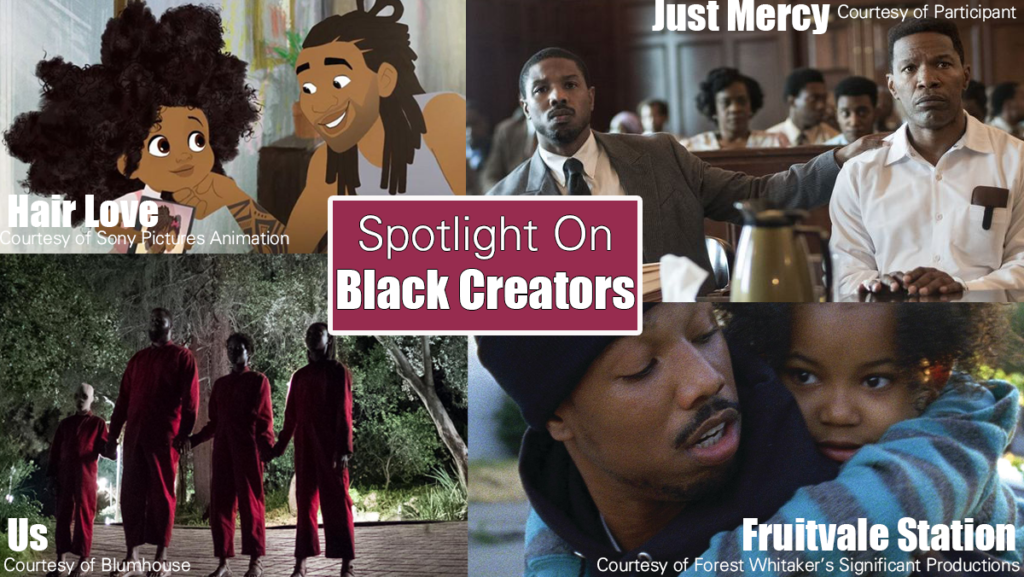The backbone of the Life & Culture section at The Ithacan is pop culture — and, by extension, Black culture that has influenced pop culture.
Yet Black musicians, actors, filmmakers and authors are often not given the recognition they deserve. As directors or musicians, they’re overlooked for award nominations, let alone wins. As actors, they’re shifted to the side for their white counterparts or are cast in minor character roles. They are rarely in the spotlight when their own hands built the stage.
However, in light of the murder of George Floyd and other Black individuals and the accompanying protests, it seems as if educational books and movies about Black lives are the only media being sought out. As lovers of art and pop culture, the Life & Culture section wishes to highlight Black creators whose intentions were not solely to inform. Creative work can often have just as much of an impact on those wishing to diversify their media consumption.
Below are just some of the personal favorites and recommendations from the editors and staff writers of the Life & Culture section.
Avery Alexander, Staff Writer
“Hair Love,” directed by Matthew A. Cherry, Everett Downing Jr. and Bruce W. Smith
Available on YouTube
Academy Award–nominated, animated shorts are often ignored or forgotten, drowned out by viewers’ excitement about the full-length films. However, the 2020 Best Animated Short Film winner, “Hair Love,” is proof that people should be paying a bit more attention to these smaller, less flashy entries.
The story follows a little girl named Zuri and her dad as they get ready for an important event. Zuri’s dad has to take on the daunting task of doing his daughter’s hair, and controlling her mass of beautiful curls and kinks is not as easy as it looks.
There is a long history surrounding Black hair in this country. Before the first slaves were taken and sold, African communities had a rich culture surrounding their hair. The way someone would style their hair was used as a symbol for marital status, fertility, wealth and more. Hairstyling was often a very feminine practice. To this day, hair care is often considered to be an activity that mothers and daughters share. “Hair Love” introduces a situation in which the man in the family is required to step out of his comfort zone and take on a task that is not traditionally taught to Black men.
Years of relentless oppression led to a gradual erasure of hair culture among slaves. But this loss did not prevent a new hair culture from being developed in the United States. Even with the limited tools available, Black women in the 1700s executed elaborate hairstyles — hairstyles that no white woman could ever dream of creating. To stop this, laws were implemented that required Black women to don headscarves in public to keep their hair hidden. In response, women began wearing their scarves in intricate styles, effectively rebelling against the unjust laws.
During the civil rights movement, there was revived interest for Black people to reconnect with their roots. Because of major influences like Angela Davis and the Black Panther Party, natural hairstyles like the Afro became a symbol of Black power.
Even with a history of rebellion surrounding hair, whiter hair has still been seen as desirable in the U.S. With the introduction of both heat and chemical hair straighteners, it became even more common for Black women to keep their hair straight. Many Black women can recount a time in their childhood when hair care was traumatic and painful. What once was an enjoyable social activity was morphed into something unpleasant and scary. This intense necessity to assimilate into a hostile culture still sticks with us today and is just one reason that it is so important to have works like “Hair Love” that directly go against the imposed message that whiteness is beauty.
“Hair Love” is a direct reflection of the natural hair movement and the cultural shift that it has fostered. Sales for hair relaxers dropped 22.7% between 2016 and 2018, and statistics like these, along with media like “Hair Love,” show that we are moving away from hating our hair and toward embracing it for the beauty that it is.
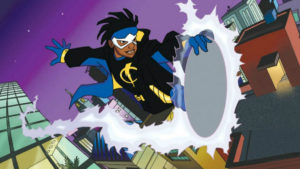
“Static Shock,” created by Dwayne McDuffie, Denys Cowan, Michael Davis and Derek Dingle
Available to stream on DC Universe
The superhero genre is dominated by white characters. Don’t believe me? Out of the 138 individual characters listed on the DC Comics’ website, only eight are Black — an unbelievably small 5.8%.
We have seen some improvement in inclusion in recent years with movies like Marvel’s “Black Panther” and “Spider-Man: Into the Spider-Verse” introducing the concept of Blackness in superheroism to the world. But while these films are some of the most recent portrayals of Black superheroes in mainstream media, they are not the first superhero endeavors to include Black voices. Many superhero fans recall “Static Shock,” a cartoon that ran for four seasons from 2000 to 2004, as the pioneer of acknowledging Black superheroes.
The show follows Virgil Hawkins (Phil LaMaar) after he gains the ability to manipulate electricity and becomes the titular superhero, Static. The show not only features Black people but takes time to reflect on the difficulties and hostility that Black people, especially young Black men, face daily in the United States.
One episode that captures this perfectly is “Sons of the Fathers,” the eighth episode of the first season. Virgil wonders why his best friend Richie Foley (Jason Marsden) never invites him over to his house, but, when Richie reluctantly invites Virgil over, Virgil discovers that Mr. Foley is a blazing racist. He verbally chastises Virgil, implying that he is a criminal, and condemns the music he listens to, the way he speaks and the way he dresses. Facing racists is the daily struggle for those with brown skin in America, and “Static Shock” pulls no punches when dealing with this touchy subject.
While franchises like “Black Panther” and “Spider-Man: Into the Spider-Verse” are both fantastic and well-thought-out portrayals of Black people, there is something incredibly raw about “Static Shock” that neither of those movies has. The show is constantly based in reality — no futuristic cities made of indestructible metal or portals to alternate dimensions here — which makes the implications of the racism that Virgil faces feel uncomfortably real.
Liam Conway, Senior Writer
“Fruitvale Station,” directed by Ryan Coogler
Available to stream for free on IMDb TV
A piece of art that transcends time, “Fruitvale Station” tells the true story of Oscar Grant, a Black man from Hayward, California, as he navigates through the final day of his life in Oakland, California, on New Year’s Eve in 2008.
This film was Ryan Coogler’s first feature as writer-director, as well as the beginning of his close partnership with actor Michael B. Jordan. Coogler went on to write and direct major films like “Creed” and “Black Panther.” This debut is also notable because Coogler was only 26 at the time “Fruitvale Station” was released, notably young to be getting his big break as a director.
In an act of blatant racism, Oscar is shot by a police officer in a subway station. But “Fruitvale Station” doesn’t linger on the violence audiences see through the real-life video of Oscar’s death at the beginning of the film. The film makes viewers feel involved in the conflict, regardless of their race or political opinions, by capturing the violent way police harm Black people in the United States. The film also feels personal because Oscar was more than just a tragic headline. He was a real person with a real family — a sentiment that resonates strongly with the testimonies shared at recent Black Lives Matter protests around the U.S.
Something that sets this movie apart is its optimism. While “Fruitvale Station” has a dark ending, it doesn’t drag the viewer through a series of solely sad scenes. There are several scenes in which Oscar has wholesome interactions with background characters, like a woman at a fish market. These small moments give this film glints of beauty and hope.
Coogler didn’t make a film that boils Oscar’s entire life down to one moment. Instead, he opted to make a film that shows a holistic view of Oscar, a person who dealt drugs and also strived to be a family man. “Fruitvale Station” is a portrait of a man who was not perfect but was striving to be better.
Antonio Ferme, Senior Writer
“Just Mercy,” directed by Destin Daniel Cretton
Available to rent
Director Destin Daniel Cretton’s most recent film, “Just Mercy,” is based on Bryan Stevenson’s best-selling autobiography of the same name. The film follows Bryan (Michael B. Jordan) as he defends wrongly convicted death row inmates in Alabama. Bryan becomes fixated on nullifying the charges against Walter McMillian (Jamie Foxx), who is sentenced to die for the murder of an 18-year-old girl despite heavy evidence pointing to his innocence.
Within the first few minutes of “Just Mercy,” the cops seize Walter. From there, the film does not hold back its portrayal of racism that Black citizens experience under the law. In many ways, this is a commentary on the flaws in how the United States justice system judges people of color, as well as how it treats the rich and guilty better than the poor and innocent. As details of the story continue to unfold, this courtroom drama tests the viewer’s emotional endurance.
In his novel, Stevenson discusses not being able to fully understand a problem unless you get close to it. Cretton is able to accomplish this in his film by dedicating screen time to scenes with deep and meaningful character development. He does so through precise camerawork, allowing viewers to become fully immersed in these scenes as if they were sitting in the same room.
Elevated by Jordan’s phenomenal performance, the film ultimately dons a more positive message: In the face of injustice, there will be people who are willing to fight for what they believe is morally right. Because the filmmakers did not stray too far from the real-life story, it makes every moment feel that much more immediate.
“Sorry to Bother You,” directed by Boots Riley
Available on Hulu
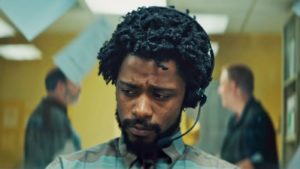
In “Sorry to Bother You,” Cassius Green (Lakeith Stanfield) gets a new job as a telemarketer at a corporation called RegalView. The film is pure absurdity right from the start when Cassius’ older co–worker Langston (Danny Glover) teaches Cassius, a Black man, how to use his “white voice” while speaking with customers on the phone. For Cassius, the “white voice” convinces the person on the other end to treat him with more respect and buy more from him. What follows is a profitable yet chaotic career in telemarketing, and Cassius, who feels like he was granted the opportunities that are usually offered to wealthier white people, enters a fantasylike world that reflects the draws and dangers of capitalism.
The premise of the “white voice” was the most captivating element of the entire film. Importantly, it exemplifies the luxury of being worry–free when not a person of color, whether that carefree approach pertains to applying for a bank loan or getting pulled over by the cops.
As the film goes on, director Boots Riley’s raw creativity shines as he cleverly depicts economic racism. The film stands out because it juxtaposes these real-life experiences with a surreal plotline.
Lucas Jafet, Staff Writer
JID
Available to stream on Spotify and Apple Music
Atlanta native JID has carved out his niche in the rap industry with Kendrick Lamar–esque style and lyrics. JID has released two studio albums to date, “The Never Story” and “DiCaprio 2,” both of which showcase his impressive rapping skills. His ability to rap quickly and menacingly over a trap beat without the usage of too much auto–tune can be appreciated in most of his discography. This is a welcome approach for many die-hard rap fans, especially in an era when more and more rap is defined by artists drowning their verses by distorting their voices.
JID raps about the obstacles he faced during his upbringing in Atlanta, and common themes across his music catalog include gun violence, rough living situations and facing oppression because he is Black. He has a knack for storytelling within his lyrics that has aided his ascent. While JID has not cracked mainstream rap dominance yet, he is a name to watch going into the future, as he follows a formula that has made many of his contemporaries household names.
Maddy Martin, Assistant Life & Culture Editor
“The Rage of Dragons (The Burning Series, book one),” by Evan Winter.
Available for purchase at The Lit. Bar, a Black–owned bookstore in the Bronx
Evan Winter is the new author to watch out for. After he self-published his first novel, “The Rage of Dragons,” in 2017, it was clear there is no such thing as a dull moment in the book. From the very first page, readers are thrown spiraling into a large-scale fantasy battle in a centuries-old war.
The book drags readers mercilessly through battles, betrayals, murders and exiles. The story follows Tau, a warrior seeking revenge on the nobility who killed his father and got away with it. To avid fantasy fans, this type of story is hardly new, but Winter’s vivid and Afrocentric world building sets it apart from many books in the genre.
The fantasy genre has been overwhelmed by Eurocentric worlds and white characters and authors for decades, but Winter is part of a new generation of authors looking to bring other perspectives to the table. “The Rage of Dragons” follows a cast of Black characters in a setting inspired by medieval Africa. The novel explores the fictional Omehi people, a highly militarized society with a rigid caste system. The caste system sets up the main conflict as the story explores universal ideas of oppression and the cycles of violence created by inequality.
“The Rage of Dragons” was nominated for Best Traditional Novel by the BookNest Awards and has received over 5,000 five-star reviews on Goodreads. The book’s sequel, “The Fires of Vengeance,” is set to release Nov. 10. Winter’s bio on the back of “The Rage of Dragons” says he was inspired to write the book because he didn’t want his son to grow up and find there were no fantasy heroes who looked like him. And as more attention is drawn to Winter’s book, more readers will find themselves in the narrative.
Arleigh Rodgers, Life & Culture Editor
“Fairview,” by Jackie Sibblies Drury
Available for purchase at The Lit. Bar, a Black–owned bookstore in the Bronx
“Fairview,” a play written by Jackie Sibblies Drury, requires total secrecy to be fully experienced. It would be a disservice to all readers — or, more specifically, those who might see it in a theater — to give more than a simple plot description. Even doing that means betraying some of Drury’s trust because readers or audiences must go in completely blind to this spellbinding and witty play about racism, the white gaze and cultural appropriation.
Those three themes are incomplete without Drury’s inventive writing, particularly in the way she explores her characters and their unconventional interactions throughout the play. “Fairview” focuses on a Black family gathering for a birthday dinner, and things are slightly amiss.
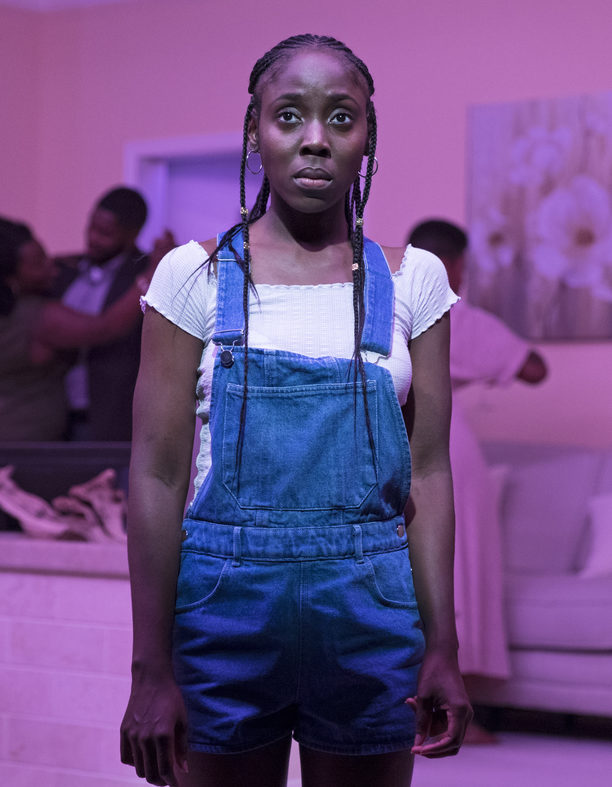
The general anxiety that Beverly, the family’s matriarch, feels is at first attributed to the prospect of tensions within the family boiling over, but, as the play stretches into the second and third acts, it becomes clearer that something sinister is afoot. It’s a bombshell when the conclusion arrives because it’s an ending that has likely never been written like this into a play before, let alone produced on an off-Broadway stage. Sharp and revelatory, Drury is well deserving of her Pulitzer Prize win for “Fairview.” It’s a shame more audiences won’t be able to see the play in person, as “Fairview” closed August 2019, but the experience of reading it is just as shocking, profound and unprecedented.
“Beloved,” by Toni Morrison
Available on back order at Revolution Books, a Black–owned bookstore in New York
Toni Morrison is arguably one of the greatest writers of all time. “Beloved,” released in 1987, charts the life of mother Sethe and her daughter Denver. After escaping from the plantation Sweet Home, Sethe finds a new life in Ohio and attempts to process her life as a slave.
Sethe wrestles with her life at Sweet Home but often leaves the gruesome details she experienced or perpetrated unspoken, a character trait that is bolstered by Morrison’s expert weaving of the past and present. The novel is dreamlike, with the third–person narration occasionally distancing itself from the violence before suddenly closing in tightly and relentlessly. Readers feel Sethe’s pain though they might never know it, and they empathize with her despite the violence of her past.
What makes “Beloved” even more masterful are Morrison’s individual characters and the complex, layered dynamics she crafts among them. The book focuses on a trio of characters at all times, but the balance of this trio fluctuates as the story continues. As Morrison dives further into history — the brutality of slavery and the sickening experience of the Middle Passage — readers are held in suspense by her biting, visceral prose, aware at all times that the novel they hold is a testament to a master at work.
Brittany Howard
Howard’s debut solo album, “Jaime,” as well as Alabama Shakes and Thunderbitch, is available to stream on Spotify and Apple Music.
Where Brittany Howard goes, all who admire will follow.
In a genre often defined by white rock musicians like Jack White or Bruce Springsteen, Howard is spectacular in all positions she holds. She leads the charge as vocalist, guitarist and main songwriter of rock bands Alabama Shakes and Thunderbitch. Her 2019 album, “Jaime,” further establishes her exceptional track record. Perhaps above all, her powerhouse vocals are the reason that she’s so loved by all who listen. Maybe that’s an exaggeration, but it’s not difficult to get lost in her strong, soulful voice.
Sitting solidly at approximately two million monthly listeners on Spotify, Alabama Shakes made waves when its album “Sound & Color” won a Grammy Award for Best Alternative Music Album and was nominated for Album of the Year. “Hold On,” currently Alabama Shakes’ most-streamed song on Spotify, was additionally nominated for a Grammy for Best Rock Performance, an award that has largely been given to bands with white members, like Mumford & Sons and The Black Keys.
It’s no wonder how the band reached these achievements when its sound is so consistent and clean. But it’s worth wondering if the situation might have been different if Howard wasn’t at the helm of “Hold On” and “Sound & Color.”
Eva Salzman, Staff Writer
“Blonde,” by Frank Ocean
Available for streaming on Spotify
Frank Ocean is known to most as a man of mystery, letting time tick by between releases of long-awaited albums. He released his mixtape, “nostalgia,ULTRA,” available for free download, on his Tumblr in 2011 and his debut studio album, “Channel Orange,” one year later. Four long years afterward, Ocean released his most recent album, “Blonde.” “Blonde” is a genre-bending, raw and sincere documentation of growth that left fans hungry for more.
“Blonde” is an hourlong, emotional journey, split exactly in half by a beat switch in its center song, “Nights.” The two halves of the album represent various stages in Ocean’s life as he depicts the experiences that have shaped him into the person he is. In the first half of “Blonde,” Ocean expresses feelings of falling in love and exploring his identity. But in the second half of the album, he seems to be distraught and confused by how to move on from past lovers as if he’s exhausted with all of the efforts it took to discover and express himself.
With the album’s halfway split, the theme of duality is evident. The album name itself can be spelled one of two ways, “Blonde” or “Blond.” Both mean the same, just different gendered conjugations, male or female. It is speculated that this theme of duality stems from Frank’s sexuality. As a bisexual man, he expresses his sexuality throughout his music in vague ways. Ocean’s comfort and ability to express such deep emotions as well as his sexuality in his work have had a huge impact on music and culture overall. “Blonde” signifies change, growth, emotional maturity and freedom in expression. The presence of these themes in music is extremely powerful. They resonate deeply with listeners by normalizing the struggles that today’s youth have to face.
Overall, the impact of “Blonde,” or the way many choose to see it, is the normalization of emotional and sexual expression, an impact that seems to become more important every day as mental health is often overlooked. Ocean exhibits in “Blonde” that emotions are meant to be felt and learned from, one of the most important life lessons one can hear.
Dariene Seifert, Senior Writer
“Us,” directed by Jordan Peele
Available to stream on Cinemax
Even in 2020, Hollywood films continue to fail to have proper representation for marginalized groups. The horror genre especially suffers from this. But director Jordan Peele, who won an Academy Award for Best Original Screenplay for “Get Out” (2017), is at the helm of creating Black-focused horror films. He brilliantly shows how important representation is by showing a perfect balance of social commentary and making a great slasher movie with Black characters at the center.
“Us” follows a family trying to enjoy its summer, but things soon go awry when unexpected and sinister visitors arrive: their unsettling doubles. The doubles declare they no longer will be trapped as “shadows,” and the family members must fight for their lives as the doubles hunt them down. While keeping true to his social commentary about race, “Us” seems to present the antagonists of the movie as the characters’ creepy doubles, but it is soon clear that it is not “us” that must be feared, it is “US” — the U.S.
There is an offensive, widespread trope in horror films in which Black characters always perish first. Black characters are also often the sidekicks for the white hero, who saves the other characters from the killer. These tropes are flipped on their heads in “Us,” with the Black characters taking center stage as they take on their doubles. Although “Us” wasn’t as well received as Peele’s first film, “Get Out,” it is still an entertaining and thought-provoking film.
Frankie Walls, Social Media Manager
“Nappily Ever After,” directed by Haifaa al-Mansour
Available to stream on Netflix
“Nappily Ever After” is a Netflix film released in 2018 and directed by Haifaa al-Mansour, the first female Saudi Arabian filmmaker. “Nappily Ever After” is a film adaptation of the first book in Trisha R. Thomas’ nine–book series, “Nappily.” The film adaptation of “Nappily Ever After” focuses on Violet Jones (Sanaa Lathan), a young African–American woman, and her relationship with her natural hair.
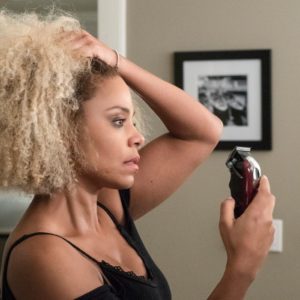
From the beginning, Violet seems to fit the strong Black woman trope. At a young age, the pressure from her mother and the societal standards for Black children — feeling like she needed to straighten her natural hair, for example — convinced Violet that she always had to be “presentable.” She only saw herself as “perfect” when her hair was straightened or relaxed. There is a moment in her childhood when Violet recounts going into the pool to have fun. Instead, she is ridiculed by a boy who says her hair “looks like a wet Chia Pet.” It becomes clear that the power and security Violet has within herself as an adult comes from outward validation and looks. She does not have a strong sense of self, and she is always looking for men to validate her.
Instead of focusing on her love life, the film follows her rediscovering and learning to love herself after an incident that ruins her hair. Love takes somewhat of a backseat. This is important because Black women have always been policed for their hair. Hair is a big part of a Black woman’s identity. “Nappily Ever After” shows that it is never too late to discover one’s self.
“My Wife and Kids,” created by Damon Wayans
Available to stream on Philo
“My Wife and Kids” is a family sitcom originally released in 2001 that ran for five seasons. It follows Michael Kyle (Damon Wayans), his wife Jay (Tisha Campbell) and their adventure in raising their three children: Claire (Jazz Raycole in season 1, Jennifer Nicole Freeman in seasons two through four), “Junior” (George O. Gore) and Kady (Parker McKenna Posey). While Michael is focused on raising his children in the traditional sense, Jay is trying to rediscover who she is and what she wants to pursue as a profession. Shows like “My Wife and Kids” are important. They provide a way for people to see the normality of Black families raising their children instead of stereotyping that all Black children are in single-parent homes.
Wayans created the show and worked on it as a writer, producer and actor. The Wayans family is one of the most notable African–American families in the entertainment industry. It created shows and films that showed off Black actors and Black experiences that might not have been seen or brought to light in other mainstream media.
The show is family–oriented. Episodes portray family issues and how the Kyles deal with them. The themes can be anywhere from lying to your parents, sneaking out, puberty, teen pregnancy, joining the military at a young age to starting a business. “My Wife and Kids” spoke about serious issues while always adding an element of humor so it wouldn’t be so intense.
“Dear White People,” created by Justin Simien
Available to stream on Netflix
“Dear White People” is a Netflix original series released in 2017 based on a 2014 film with the same name. It follows a group of Black students and their experience going to a fictional Ivy League college. While the name “Dear White People” gives the impression that the show will focus on issues the students have with their white classmates, the show instead examines the Black experience at a predominately white institution. Season one focuses on Samantha White (Logan Browning), a biracial student, navigating both parts of her identity while surrounding a radio show that she created: Dear White People.
“Dear White People” isn’t afraid to have tough conversations. Throughout season one, we see how the students handle a Blackface party and their white friends saying the N-word. There is also a conversation that sheds light on police brutality and the harsh reality Black students face in some spaces. The show has a way of focusing on how social and political structures shape the identities some people create for themselves. “Dear White People” is a great conversation starter for all looking to discuss race.
“When They See Us,” directed by Ava DuVernay
Available to stream on Netflix
“When They See Us” is a Netflix original limited series directed and co-written by Ava DuVernay. It is based on the true story of the Central Park Five, also known as the Exonerated Five. In 1989, a white woman was assaulted and raped in Central Park. Through the corrupt and racist justice system, the police officers on the case coerced five minors into admitting a crime they did not commit. They spent between six to 13 years in prison.
The series follows the Central Park Five from when they were first convicted of the crimes in 1989 through their exoneration in 2002 and to the settlement New York finally reached in 2014. This show was one of the most realistic depictions of what the Central Park Five went through. DuVernay specially had the Exonerated Five — Korey Wise, Kevin Richardson, Raymond Santana, Antron McCray and Yusef Salaam — on set so their stories would be told properly. This show was impactful. It hurt to watch and caused a level of sadness and discomfort, but that’s the harsh reality of racism.
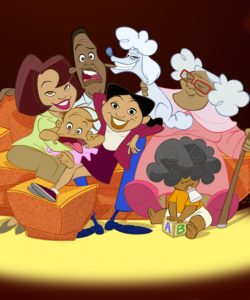 “The Proud Family,” created by Bruce Wayne Smith
“The Proud Family,” created by Bruce Wayne Smith
Available on Disney+
“The Proud Family” is an animated television series released on Disney Channel in 2001. It follows 14-year-old Penny Proud (Kyla Pratt) going through adolescence with her friends. It also focuses on other members of the Proud family, their extended family and their close friends. The show explores how the characters navigate entrepreneurship, relationships and cultural and racial differences.
Though Penny is a Black girl, she has a friend group that includes a Latina, a white girl, a Black girl and a Black boy. The dynamic of their friendship allows them to look into their own identities and understand the differences they have within their friendship. The animated series ran for two seasons and covered a multitude of issues. Whether it be a history lesson on civil rights, learning about other cultures and heritages or just plain teenage adolescence, the Proud family had moments that anyone could relate to. The show did not shy away from LGBTQ rights, toxic masculinity, women’s empowerment, body diversity and prejudice and racial stereotyping.


